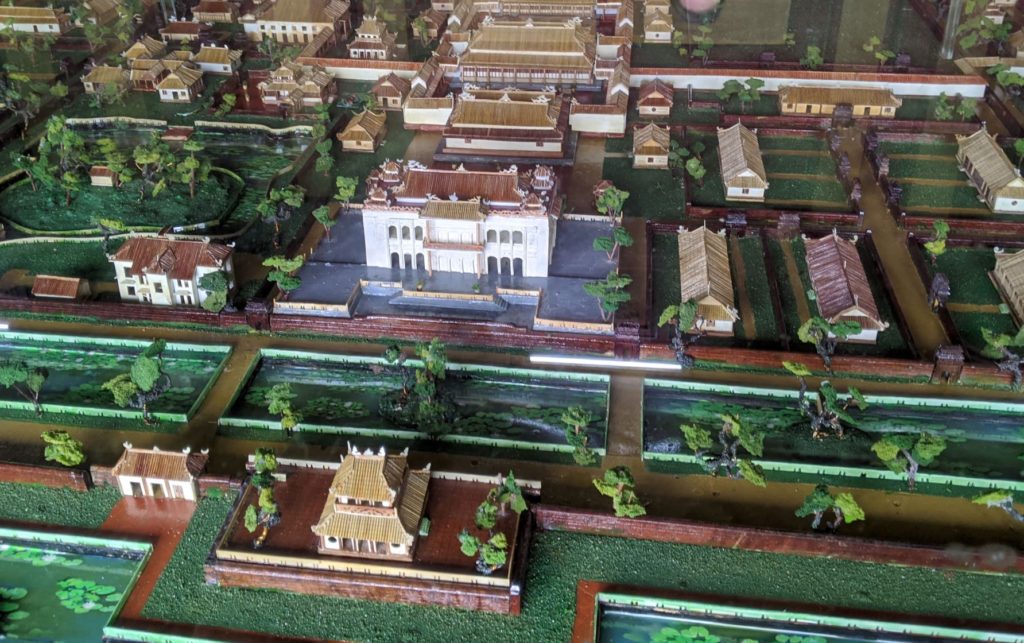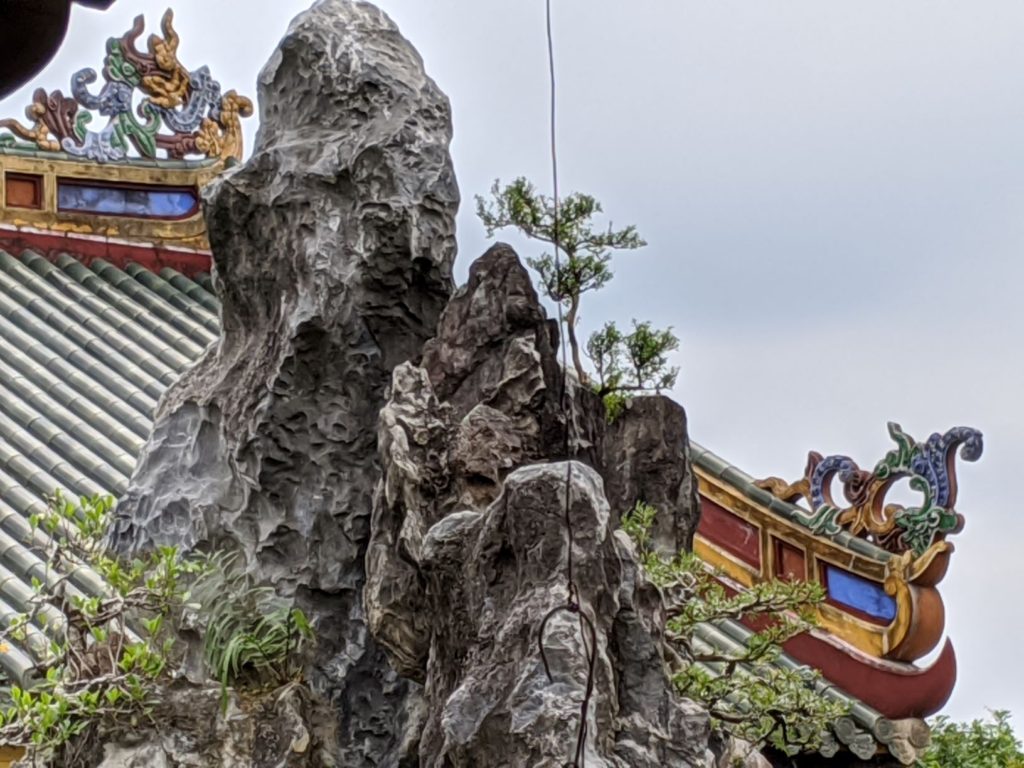There is a satisfying symmetry in having visited, in the same day, a structure begun by the first emperor of the Nguyen dynasty, and a structure completed by the last emperor of that dynasty. Fitting, too, perhaps, that the last structure was a tomb (a very impressive one, to be sure) in which the penultimate emperor was buried, while the first was the Imperial City in which the initial and subsequent emperors lived.
The place is huge, a city within a city. Begun in 1804 and employing thousands of workers, the fortifications surrounding the outer city are themselves surrounded by a moat more than ten kilometers long. Water was diverted from Hue’s Perfume River to fill the moat. The inner Imperial City was the abode of the royal family. It is surrounded by its own wall (above) and itself encompasses an impressively large area.



Gia Long, the first Nguyen emperor, unified his empire across all of what we now know as Vietnam–stretching from the border with China in the north to the South China Sea in the south. He established the capital of this empire at Hue, the ancestral home of his family. Nguyen emperors continued to live here until the Nguyen dynasty was overthrown in 1945. The Imperial City at one point contained over a hundred buildings, but much of it was destroyed during the French and the American wars. It is now a UNESCO World Heritage Site and is being restored.

The Imperial City is spacious, with wide plazas and gracious buildings.








Deep within the complex are more intimate structures, surrounded by gardens.



They have amazing roof lines.







In one area, we saw delicate and impressive bonsai trees.




Within the walls are also a couple of coffee shops. We passed one on our way out a different gate from the one we entered. The coffee shop and its adjacent courtyard were entirely charming. So was the gate!




We had lunch in a restaurant that was outside the Imperial City but still within Gia Long’s old city walls. Lunch, too, had its charms.






















